Cherry shrimp are small, tropical fish substrates that exhibit vibrant colors and uniquely contribute to the cleanliness of the water in an aquarium. Cherry shrimp are known for consuming algae and don’t show aggression towards other fish, even with their kind, making them good for both new and experienced aquarists. But despite this, they have particular conditions that must be met for their growth and development. In this guide, you will learn how to keep your cherry shrimp tanks as laid-back as possible, so your shrimp can live happy, active, and healthy lives.
Content Table
Do Cherry Shrimp Eat Algae
Yes, cherry shrimp are excellent algae eaters. They play a helpful role in keeping your tank clean by consuming:
- Soft algae, like green algae and biofilm, are found on plants, decorations, and glass.
- Detritus, including decaying plant matter and uneaten fish food.
- Fish waste particles, though indirectly, as they graze on the biofilm and microorganisms that grow on it.
This makes them small cleaning machines for nano tanks or planted aquariums. However, they do not perform routine tank maintenance. Despite the fact that a clean cherry shrimp tank assists in slowing down the algae as well as the waste formation, the tank still needs intervention from a human being to thrive.
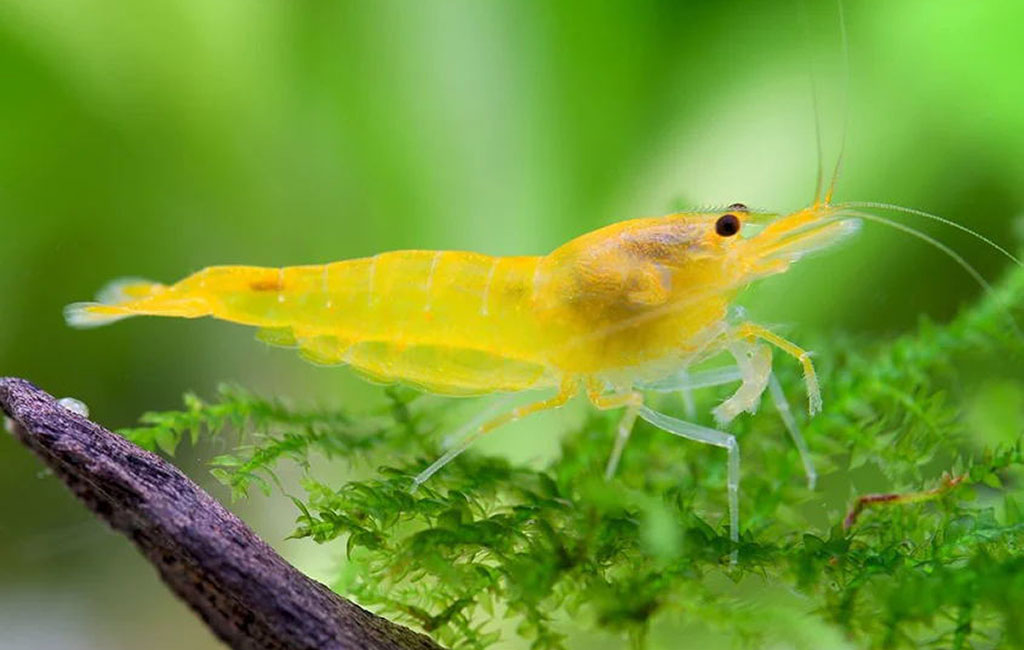
clean cherry shrimp tank
Cleaning Substrate in Cherry Shrimp Tank
Substrate cleaning is one of the vital aspects of maintaining a cherry shrimp aquarium. Over time, waste, food matter, or plant residues find their way to the gravel or sand bed, thereby constituting a threat to ammonia build-up and unhealthy water conditions.
Here’s how to clean cherry shrimp tank substrate safely
- Use a Gentle Gravel Vacuum
It is quite dangerous to use a standard gravel vacuum because it might be too powerful for the shrimp. However, it is advised to use a small siphon with the possibility to change the rate of the flow. For water parameters – in order not to suck baby shrimp, it’s best to gently glide the vacuum over the substrate surface.
- Spot Cleaning Over Deep Cleaning
For instance, instead of using detergent and water, which affects the whole tank, it is advised that cleaning be done in parts. For example, clean half of the tank’s substrate this week and the other half next week. This, in a way, helps in maintaining useful bacteria and the least stress to the shrimp.
- Remove Visible Debris
Large grains of debris or uneaten food that may be deposited on the substrate surface should be removed using tweezers or a turkey baster.
- Encourage Plant Cover
The live plants also utilize wastes and nutrients and, therefore, form biofilm, which the cherry shrimp enjoy feeding on. Carpet plants and mosses are most beneficial for shrimp tanks.
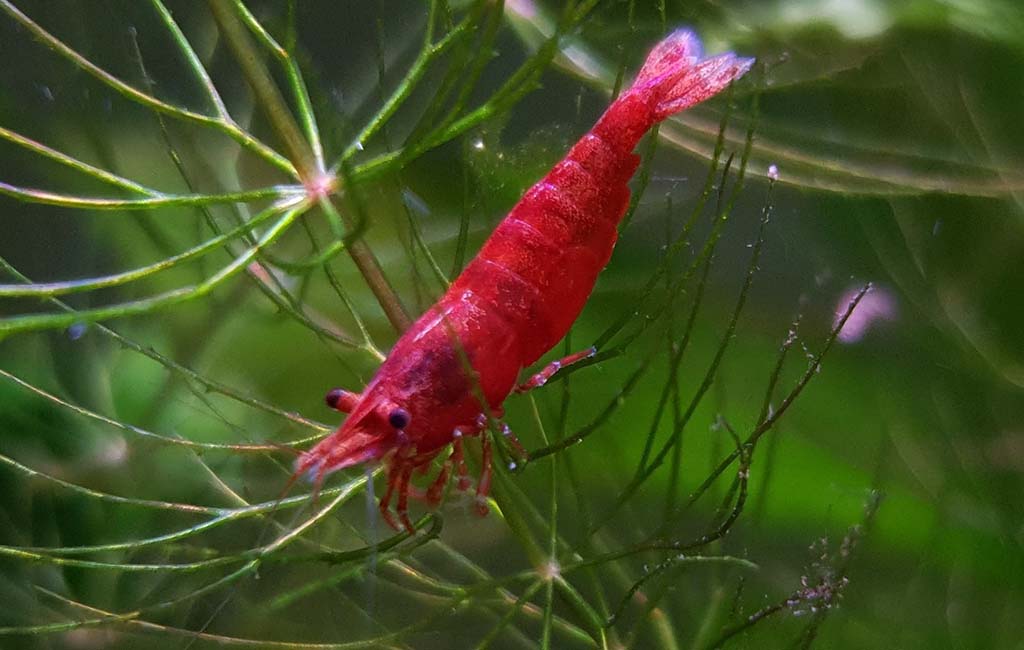
Community shrimp tank
When the Cherry Shrimp Are in a Community Tank
If you’re keeping cherry shrimp in a community tank with other fish, extra caution is needed when cleaning.
Here’s how to clean without disrupting or harming your shrimp:
- Use Shrimp Guards
Install a sponge pre-filter on your intake pipe to prevent shrimp (especially babies) from getting sucked into your filter system.
- Avoid Harsh Movements
Fast-moving nets or large siphons can frighten or harm shrimp. Move slowly and use fine mesh nets or tools designed for nano tanks.
- Time Cleaning With Feeding
Feed tank mates just before cleaning. These keep fish occupied, reducing the risk of them disturbing the shrimp while you clean.
- Create Shrimp Hiding Zones
Add moss balls, cholla wood, and caves to give the shrimp places to hide during maintenance. This reduces stress and protects vulnerable juveniles.
- Test Water Parameters Often
Fish and shrimp often have different tolerance levels. Community tanks may build up waste faster, so regular testing and partial water changes (10–20% weekly) help maintain safe conditions.
Cherry Shrimp Tank Maintenance Frequency
Now, let’s talk about how often maintenance is done.
Here’s a recommended cherry shrimp tank maintenance frequency schedule:
Daily
- Check water temperature.
- Observe shrimp activity and behavior.
- Feed high-quality shrimp food in moderation.
Weekly
- Test water parameters (Ammonia, Nitrite, Nitrate, pH, GH, KH).
- Perform a 10–20% water change using dechlorinated or remineralized water.
- Gently vacuum visible debris on the substrate.
- Clean algae on the tank glass with a sponge or scraper.
Biweekly
- Rinse sponge filters in old tank water (never tap water).
- Trim and tidy live plants.
Monthly
- Clean any decorations and hardscape with a soft brush.
- Deep-clean half of the substrate.
- Double-check filter efficiency and water flow.
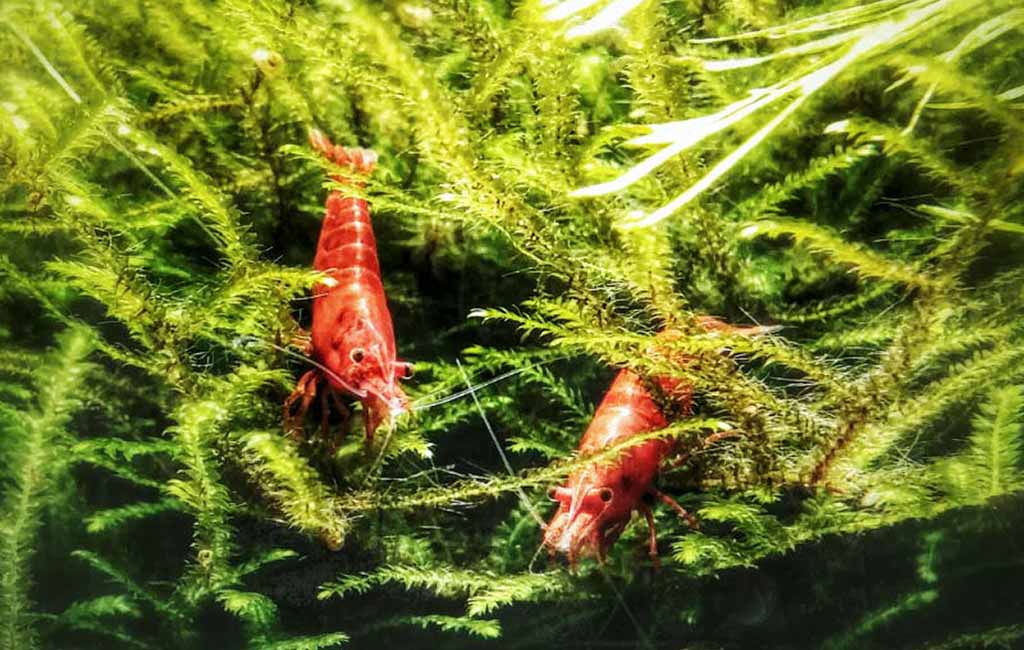
cherry shrimp tank maintenance frequency
Key Points of Maintaining a Cherry Shrimp Tank
Let’s summarize the key points of maintaining a cherry shrimp tank the easy way:
- Stable Water Parameters: Cherry shrimp are sensitive to changes in water chemistry. Use a remineralizer for RO water and avoid sudden pH or temperature swings.
- Gentle Cleaning: Always use soft tools and spot-cleaning methods to avoid disturbing the shrimp and damaging the biofilm they feed on.
- Don’t overfeed: Uneaten food quickly fouls the water. Stick to small, measured portions.
- Plant-Powered Tanks: Live plants, especially moss and ferns, offer shelter and food and help filter the water naturally.
- Low-Flow Filtration: Sponge filters or gentle HOB filters with shrimp guards are ideal to avoid shrimp being sucked into equipment.
- Consistent Schedule: Follow a regular cleaning and water change routine. Small, consistent changes are better than big, irregular ones.
- Watch for Copper: Avoid medications or fertilizers with copper, as it’s toxic to shrimp.
By following these points, you’ll avoid the common mistakes that lead to shrimp loss and poor tank health.
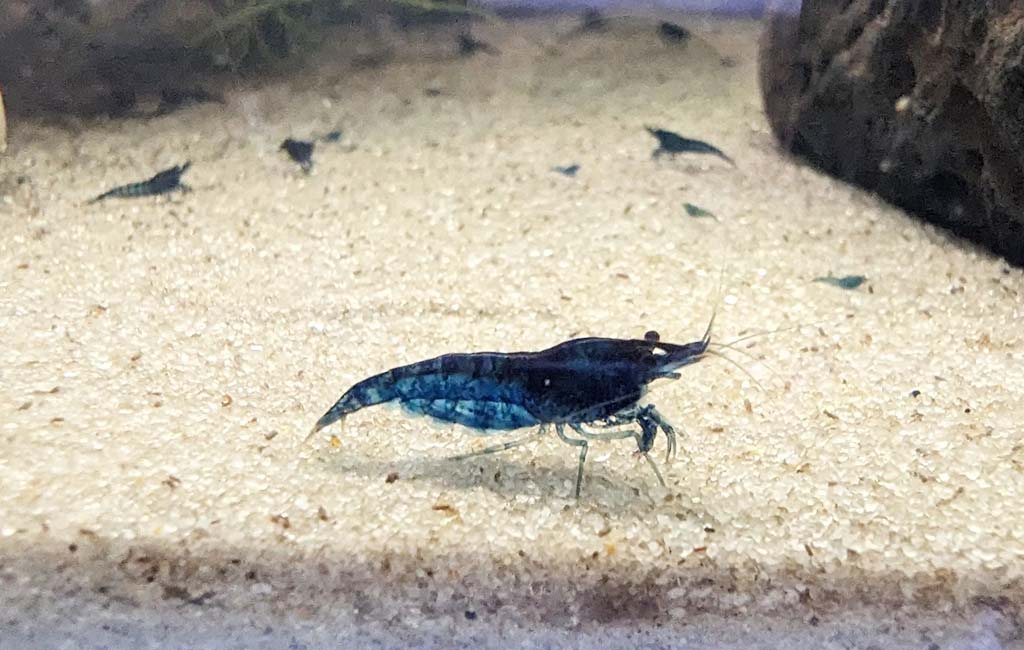
maintaining a cherry shrimp tank
Cherry Shrimp Tank Mates
Considering cherry shrimp’s diet and temperament, you should introduce compatible fish that will not harm the shrimp nor compete with them for food. Ideal tank mates can help clean the tank and will make your work easier and help in maintaining the water conditions within the tank.
Here are the top options for tank mates for cherry shrimp:
- Otocinclus Catfish
Small fish should be kept in an aquarium with shrimp because they commonly do not harm the shrimp. They help clean the glass, the leaves of plants, and the walls of the decorations. They love to live in groups of about 5 to swim, and just like the cherry shrimp, they need stable, clean water.
- Snails (Nerite, Mystery, or Ramshorn)
These are natural tank cleaners that actively consume algae, debris, and any leftover food particles within the tank. It will assist with avoiding ammonia pregnancies and can easily integrate into a shrimp environment. Among all aquatic snails, nerite snails do not reproduce in freshwater to prevent overpopulation of shrimp tanks.
- Small Rasboras (Chili Rasboras, Harlequin Rasboras)
These fish belong to the Cyprinidae family and have the following characteristics: peaceful, mainly shy, and well-adapted for life in a planted tank. Adult cherry shrimp are not venomous, but the baby shrimp might get eaten, so offer hiding spots like dense moss, caves, or shrimp tubes.
- Pygmy Corydoras
Larger yet peaceful, the Pygmy Corydoras lacks competitors for the ability to eat algae exceptionally well. They are compatible with cherry shrimp and contribute to cleaning out biofilms and handling of organic matter in the tank.
- Amano Shrimp
Larger yet peaceful, Amano shrimp are known for their unmatched algae-eating capabilities. They coexist harmoniously with cherry shrimp and help control biofilm and organic waste.
- Ember Tetras or Celestial Pearl Danios
They are both small and introverted fish, which means they do not pose a threat to shrimp attacking them. They bring color and dynamics into the picture, but still lack harmony within their realm.
Avoid: Betta fish, angelfish, goldfish, or any large cichlids—they may eat or stress out your cherry shrimp.
Tip: The simplest and probably the safest of them all is a shrimp-only tank containing moss, plants, wood, etc. However, if a community has been arranged, choose nano species, provide many hiding places, and do not include aggressive or predatory companions.
Final Thoughts
Maintaining a cherry shrimp tank doesn’t have to be complicated. With a little planning and a consistent routine, you can clean a cherry shrimp tank easily while keeping your shrimp happy and healthy. Their natural algae-eating habits make them great helpers in the tank, and with the right maintenance frequency, tools, and tank mates, your shrimp colony can thrive.
Focus on stability, gentle cleaning, and minimal disruption, and you’ll find that maintaining a cherry shrimp tank becomes one of the most rewarding parts of your aquarium hobby.
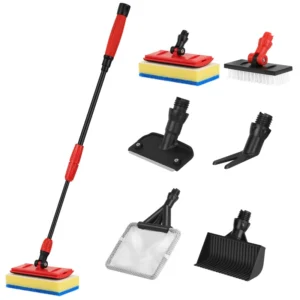

Leave a comment